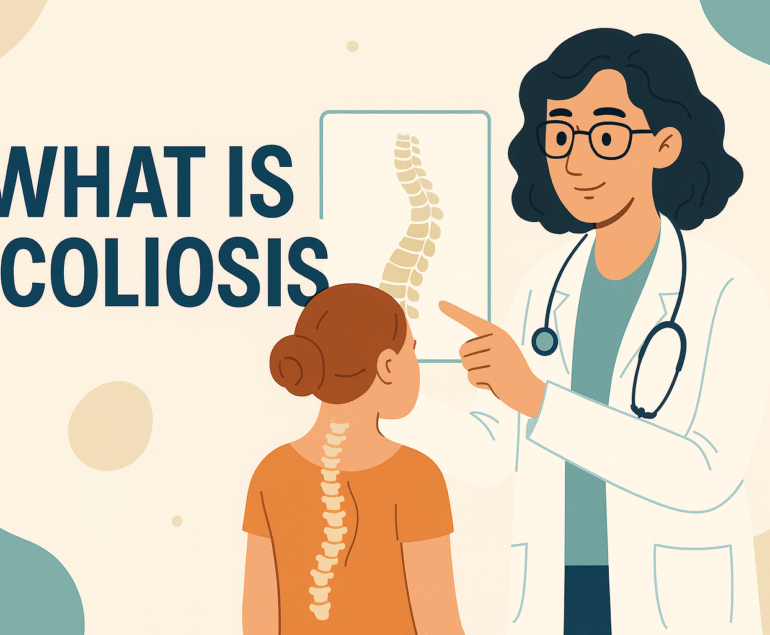Sciatica Isn’t a Diagnosis. It’s a Symptom. Here’s What Might Be Causing Yours
If you’ve been told you have Sciatica, you’re not alone. But here’s the truth most people (and even some doctors) forget,
Sciatica isn’t a diagnosis. It’s a symptom.
It’s a red flag that something is irritating or compressing the nerves in your spine.
The question isn’t just “Do you have sciatica? The question is “What’s causing your sciatica?”. Understanding the root cause is the first step toward long-lasting relief.
 What is Sciatica?
What is Sciatica?
Sciatica refers to a pain that radiates along the path of a nerve from your lower back through the hips and buttocks and down each leg. It can be felt as a sharp, stabbing, shooting, or electric shock-like sensation, which may or may not be associated with tingling or numbness along the path of the nerve.
But sciatica isn’t a disease. It’s a symptom of something pressing or irritating the nerve.
 Common Causes of Sciatica You Should Know
Common Causes of Sciatica You Should Know
Let’s explore the real culprits behind your sciatica symptoms
1. Disc Herniation (Slipped Disc)
This is the most common cause of sciatica.Your spine is made up of bones (vertebrae) and soft cushions (discs) between them. The spinal cord and nerves pass through a canal within the bony vertebrae. A disc slipped out of place can press directly on the cord or the nerve.
Symptoms may include
-
- Sudden lower back pain.
-
- Pain radiating down one or both legs (Sciatica).
-
- Weakness or loss of sensation in the buttocks or legs.
-
- Difficulty in sitting, standing or walking.
-
- Difficulty in passing/ holding urine or stool.
2. Foraminal Stenosis (Narrowing of Neural Openings)
As we age, the small openings in the spinal column called the Neural Foramina through which nerves exit can become narrow. This results in compression of the spinal nerves, causing sciatica symptoms.
It’s common in people with advancing age and is often due to disc degeneration, arthritis of the joints in the spinal column, or bony spurs.
Signs of foraminal stenosis
-
- Back or leg pain that worsens when standing or bending backwards
-
- Improvement in leg pain while bending forward
-
- Numbness/ Weakness in legs
-
- Gradual worsening over time
3. Piriformis Syndrome
Unlike the previous causes, this is a muscle-related cause. The piriformis is a small muscle located deep in the buttocks. Sometimes, it tightens or spasms, compressing the sciatic nerve underneath it.
This is more common in athletes, runners, and people who sit for long hours.
Symptoms include
-
- Deep, aching type buttock pain
-
- Pain that worsens on prolonged sitting, changing posture or climbing stairs
-
- Pain radiating down the leg: Usually not extending down the knees
-
- Pain on pressing over the piriformis muscle
4. Spinal Stenosis
This is a narrowing of the spinal canal, which can compress multiple spinal nerves. It usually affects older adults and can be associated with degenerative changes in the spine.
Clues for spinal stenosis
-
- Radiating pain in one or both legs
-
- Numbness or heaviness in the legs while walking
-
- Relief when bending forward or sitting
-
- Gradual onset and progressive symptoms
5. Spondylolisthesis
This occurs when a spinal bone slips forward over the one below it. It can pinch the nerves and cause progressively increasing back and leg pain.
6. Tumours, Infections, or Trauma
In rare cases, sciatica may be due to more sinister causes like tumours, infections like tuberculosis or abscesses, or trauma to the lower back. These are medical emergencies and require urgent attention.
When Should You Worry?
Sciatica isn’t a diagnosis, it’s a symptom – you should see your doctor immediately.
Red Flag Signs
-
- Pain radiating to one or both legs
-
- Numbness/ tingling/ weakness in your legs
-
- Gradual/ sudden loss of bowel or bladder control
-
- Severe or worsening leg pain/ numbness/ weakness
-
- Fever, weight loss, night sweats or history of cancer
-
- Sciatica following trauma or injury
These signs may indicate a more serious underlying issue; consult your doctor today.
Whom Should You Consult?
If you have sciatica-like symptoms or back pain not improving, disrupting daily activities, or any of the red flag signs, it’s important to consult your spine specialist today.
Dr. Archit Goyal is a Fellowship-trained Orthopaedic Spine Surgeon with extensive expertise in treating a wide range of spinal conditions, including trauma, deformities, degenerative diseases, and complex surgeries. Trained in advanced navigation and robotic spine surgery, and deeply committed to providing the highest standard of patient care.
What You Can Do Right Now
-
- Avoid heavy lifting, bending forward and prolonged sitting
-
- Avoid activities causing aggravation of your symptoms.
-
- Maintain good posture
-
- Schedule a professional evaluation immediately
Final Words
Remember
Sciatica Isn’t a Diagnosis. It’s a Symptom.
Don’t just mask the pain. Understand the underlying cause (disc herniation, foraminal stenosis, piriformis syndrome, or something else) and treat it at the root.
Ignoring the cause can lead to chronic pain, disability or permanent nerve damage.
 Need Expert Help?
Need Expert Help?
If you have sciatic pain that hasn’t improved in a few days, or if it’s getting worse, don’t wait.





